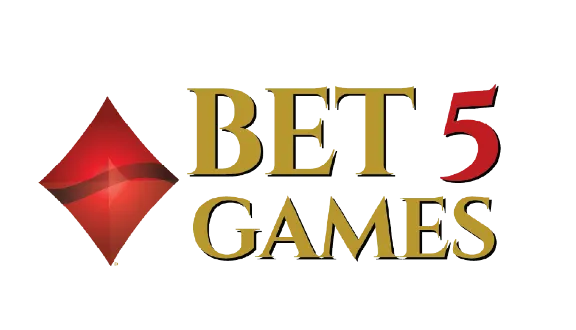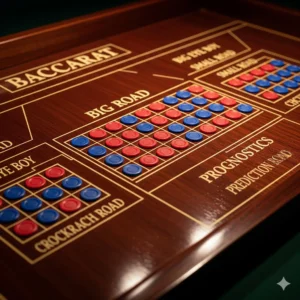An Analyst’s Introduction: Why Scoreboards Matter (And What They Can’t Do)
Welcome to the analyst’s desk. If you’ve spent any time at a baccarat table, you’ve seen them: the mesmerizing electronic displays filled with grids of red and blue circles, cryptic symbols, and cascading patterns. These are the baccarat scoreboards, known collectively as the “roads.” For the uninitiated, they are indecipherable. For the serious player, they are the canvas upon which the story of the shoe is painted.
The purpose of this masterclass is singular: to transform you from a casual observer into a sharp analyst who can deconstruct these scoreboards with confidence and precision. We will dissect each of the five roads, piece by piece, not just showing you what to mark, but teaching you the method and logic behind the patterns.
However, before we delve into the mechanics, we must address a critical principle.
A Crucial Disclaimer: Understanding the Gambler’s Fallacy
Let’s be unequivocally clear: baccarat scoreboards do not predict the future. The outcome of the next hand is not influenced by the previous 5, 10, or 50 hands. Each deal is an independent event with fixed mathematical odds. The belief that a streak of “Banker” wins makes a “Player” win more likely is a cognitive bias known as the Gambler’s Fallacy. As an analyst, your first duty is to respect the math. This guide teaches you to read history, not to predict destiny.
The Value of Pattern Tracking
So, if they can’t predict the future, why is mastering the roads essential for any serious player? The value is threefold:
Trend Identification: The roads are unparalleled at visualizing trends and the overall character of a shoe. Is it streaky? Is it choppy? This information, while not predictive, helps players decide whether to bet with a trend or wait for a more stable shoe.
Strategic Discipline: Many baccarat strategies revolve around these patterns. Understanding the roads is fundamental to applying and testing these systems with discipline.
Cultural Fluency: In the world of baccarat, from the high-limit rooms of Macau to online tables, the roads are the language of the game. Understanding them is part of the culture and a sign of a knowledgeable player.
With that foundation laid, let’s begin our deconstruction.
The Foundational Roads: Recording Every Hand
The first two roads are the source of truth. They record what happened in the shoe, providing the raw data for all subsequent analysis.
Road 1: The Bead Plate – A Raw History
The Bead Plate (also called the Bead Road or Cube Road) is the most straightforward of all scoreboards. It is a simple, chronological diary of the shoe.
Purpose: To provide a raw, at-a-glance history of every hand played, in the order it occurred.
How to Read It: The Bead Plate is a grid, typically six rows deep. You start at the top-left cell and move down. Once a column is full, you move to the next column to the right and start again from the top.
Red Circle: Banker win.
Blue Circle: Player win.
Green Circle (or Slash): Tie win.
Red Dot (in top-left corner of a cell): Banker Pair.
Blue Dot (in bottom-right corner of a cell): Player Pair.
Example: If the first three hands are Banker (with a Banker Pair), Player, and Tie, the first column of the Bead Plate would show:
A Red circle with a red dot.
A Blue circle.
A Green circle.
It is a literal, sequential record—simple, effective, and the starting point for all other roads.
Road 2: The Big Road – The Core Pattern Board
While the Bead Plate records history, the Big Road begins to analyze it. This is arguably the most important scoreboard on the table.
Purpose: To clearly visualize streaks of Banker and Player wins.
How to Read It: The Big Road is also a grid. Instead of a new cell for every hand, a new column is started only when the winning side changes.
Wins are recorded with hollow circles (Red for Banker, Blue for Player).
A streak of consecutive wins for the same side is marked by adding circles down the same column.
When the winner changes (e.g., from Banker to Player), you start a new column to the right.
Ties: A Tie does not get its own circle or column. It is marked as a green slash across the circle of the previous hand. If multiple Ties occur, a number is placed next to the slash.
Pairs: Banker and Player Pairs are marked with the same red/blue dots as in the Bead Plate.
The Big Road turns raw data into visual patterns. A long column is a “dragon,” representing a powerful streak. A series of short, single-win columns indicates a “choppy” shoe.
The Derived Roads: A Deeper Analysis of Patterns
Now we move from recording history to analyzing its texture. The next three roads—the derived roads—are the mark of a true analyst. They do not tell you what happened. They tell you if there is order or chaos in the shoe.
The Golden Rule of Derived Roads:
Red Symbol = Order / Patterned / Repetitive
Blue Symbol = Chaos / Choppy / No Pattern
Each derived road asks the same question—”Is there a pattern?”—but looks at a different point in the Big Road’s history to answer it.
Road 3: The Big Eye Boy
The Question: Is there a pattern by comparing the current result to the result from one column ago on the Big Road?
The Method: To mark the Big Eye Boy, we look at the latest entry on the Big Road. Then, we move one column to its immediate left.
Compare Depths: Look at the cell in the previous column. Is it occupied?
If YES (the previous column is as deep or deeper): The result is Red (Patterned). The shoe is repeating its behavior.
If NO (the previous column is shorter): The result is Blue (Chaotic). The shoe is doing something new.
Important Note: The Big Eye Boy (and the other derived roads) starts recording after the first hand of the second column on the Big Road. You need a point of comparison.
Road 4: The Small Road
The Question: Is there a pattern by comparing the current result to the result from two columns ago on the Big Road?
The Method: The logic is identical to Big Eye Boy, but your point of reference shifts. You look at the latest entry on the Big Road and compare its depth to the column two columns to its left.
Compare Depths: Is the cell in the column two to the left occupied?
If YES: Mark Red (Patterned).
If NO: Mark Blue (Chaotic).
Important Note: The Small Road starts recording after the first hand of the third column on the Big Road.
Road 5: The Cockroach Pig
The Question: Is there a pattern by comparing the current result to the result from three columns ago on the Big Road?
The Method: You’ve mastered the logic now. Look at the latest entry on the Big Road and compare its depth to the column three columns to its left.
Compare Depths: Is the cell in the column three to the left occupied?
If YES: Mark Red (Patterned).
If NO: Mark Blue (Chaotic).
Important Note: The Cockroach Pig starts recording after the first hand of the fourth column on the Big Road.
The Analyst’s View: Synthesizing the Information
Understanding each road is one thing; using them in concert is another. A skilled player glances at the full suite of scoreboards to get an instant feel for the shoe.
How Players Use the Roads in Practice
“Follow the Dragon”: The most famous baccarat play. If the Big Road shows a long column (a streak of 6 or more), many players will continue betting on that side until it loses.
Gauging “Quality”: Players use the derived roads to judge the shoe’s “quality.” A sea of Red on the Big Eye Boy, Small Road, and Cockroach Pig suggests the shoe is very patterned and predictable (in a historical sense). A lot of Blue suggests it’s chaotic and erratic. Players may choose to sit out during choppy shoes.
Table Selection: In a large casino, players will often “scout” tables, looking for scoreboards that display trends they like to play before sitting down.
Common Pitfalls in Interpretation
Forgetting the Disclaimer: The most common mistake is to start believing the roads are a crystal ball. They are not. Always remember the Gambler’s Fallacy.
Over-Complicating Derived Roads: Don’t look for meaning in every single red or blue mark. Use them to get a general feel—is the board predominantly red or blue? That’s the core takeaway.
Misinterpreting Starting Points: Remember that the derived roads don’t start at the beginning of the shoe. A common error is to miscalculate their starting point, leading to an incorrect reading.
Conclusion: From Apprentice to Analyst
You now possess the knowledge to deconstruct any baccarat scoreboard with an analyst’s precision. You can build the Big Road from scratch, understand the chronological story of the Bead Plate, and interpret the complex patterns of the three derived roads.
This is a significant skill for any serious player. It elevates your understanding of the game’s flow and equips you to engage with baccarat strategy on a professional level. The final step in your journey is to apply this knowledge with discipline. Use the roads to inform your decisions, to manage your strategy, and to deepen your appreciation for this elegant game, while always respecting the fundamental mathematics of baccarat.

